Carrying Sea Mine Detection Robot, ITS Banyubramanta Team Thriumps as the Champion
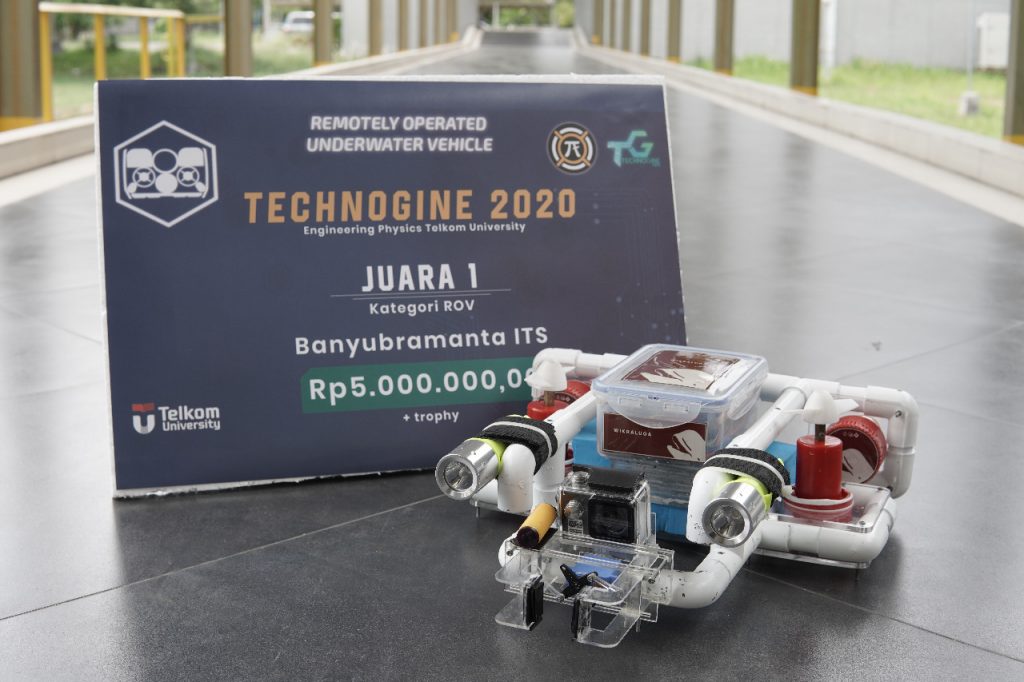
Wikraluga Robot prototype from ITS Banyubramanta Team
ITS Campus, ITS News – Institut Teknologi Sepuluh Nopember (ITS) has again shown its superiority in the field of robotics. This time, the Banyubramanta ITS underwater robot team successfully won the Technogine 2020 category of ROUV (Remotely Operated Underwater Vehicle) held by Telkom University and announced online, last Saturday (21/11).
By carrying an underwater marine mine detection robot named Wikraluga, the Banyubramanta ITS team won first place in the sub-theme of Technology, Human, Environment. The entire competition is held online.
Reza Maliki Akbar AMd ST, Coordinator of the ITS Banyubramanta Team, explained that Wikraluga is an underwater robot used to detect and clean the oceans from the presence of floating mines. These mines are traces of wars that occurred in Indonesian waters in the past. “The existence of these mines is dangerous for Indonesian waters because it can threaten marine life, fishermen, cargo ships, and passengers,” said the young man who is often called Maliki.
The existence of floating mines, continued the man who was born in 1995, is scattered in the seas of Sumatra Island, Riau Islands, Kalimantan, and is mostly found in the sea in the Java Island region. Floating mines are usually found in shallow water with a depth of 3 meters. The detection of floating mines by the Wikraluga underwater robot is carried out by sonar sensors that will pick up signals of the presence of foreign objects.
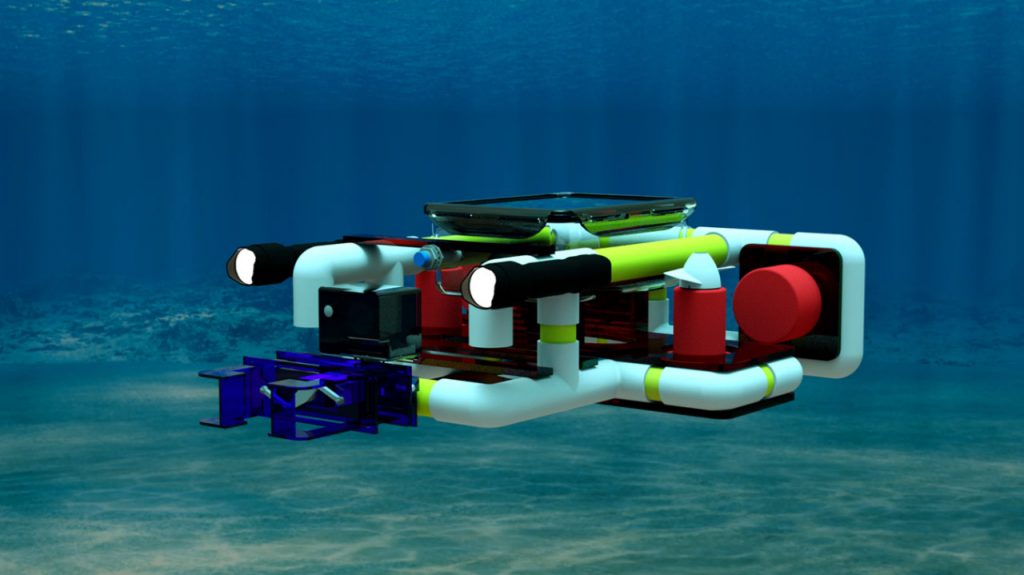
ITS Banyubramanta Team’s Wikraluga 3D Robot Design
After the detection, Maliki explained that the Wikraluga robot would further identify it with a 12 mp resolution camera assisted by lighting by a diving flashlight. If the object is a mine, the inductive proximity sensor will work to detect the presence of detonators or components that can cause an explosion. “The detonator will be removed with a gripper, then the chain of floating mines will be cut and the mines will be led by robots to the shore,” he explained.
According to Maliki, the beach is the right location to detonate mines. The reason is based on the fact that beach sand can dampen explosions from mines. “Not just any edge, the location of the explosion itself will choose where there are not many people,” he said.
Maliki admitted that this Wikraluga robot was the right breakthrough, considering that Indonesia itself still uses manual methods to detect mines in the ocean. This method includes using ships and humans to defuse mines directly. The existence of the Wikraluga robot will replace humans, thereby minimizing the risk of accidents by divers when they fail to defuse mines which results in an explosion.
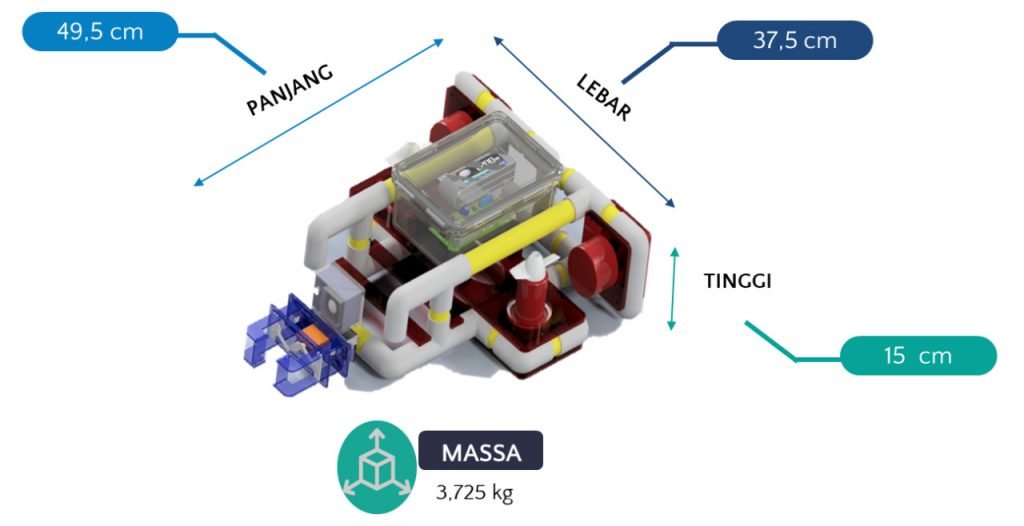
The dimension of ITS Banyubramanta Team Wikraluga Robot
Maliki also claims that the use of the Wikraluga robot can also reduce costs because there is no need to deploy large ships just to detect mines. The Wikraluga robot, which has quite small dimensions, namely 49.5 x 37.5 x 15 cm, can also be used by anyone, from fishermen to marine communities who want to explore the sea with a sense of security.
Not only small-scale use, but Maliki also explained that the Wikraluga robot had specific targets, namely the Ministry of Defense (Kemenhan), the Navy, the Ministry of Marine Affairs and Fisheries (KKP), to Non-Governmental Organizations (NGOs) engaged in the marine sector. “We hope this robot can help the government’s task in making Indonesian waters a safe place for all living things,” hoped Maliki.
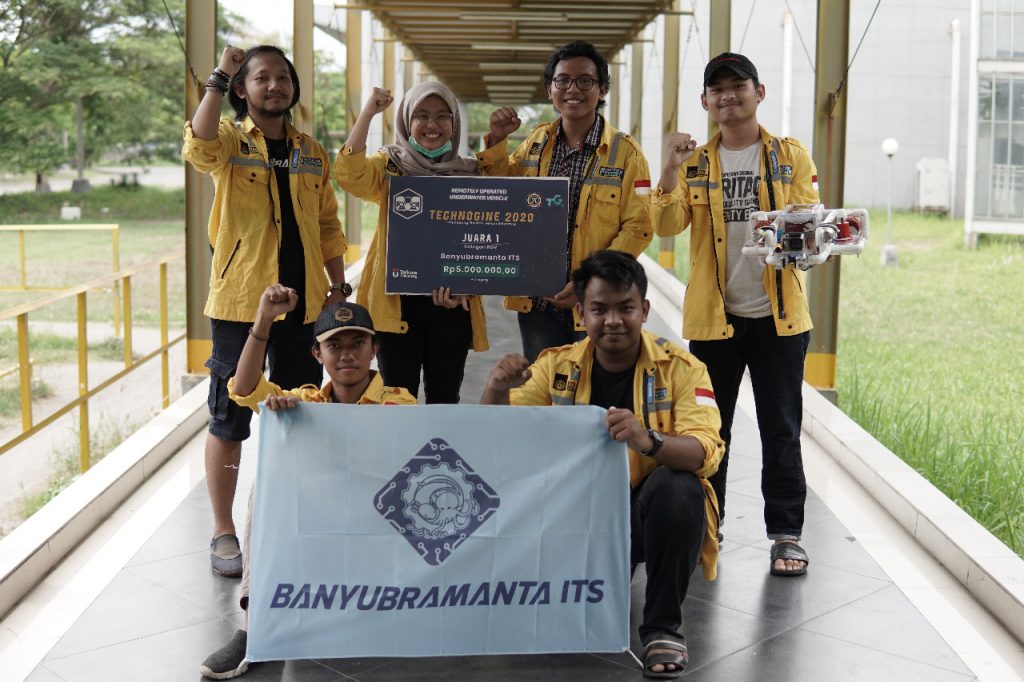
Reza Maliki Akbar (top left) and Afrizal Pradana Firmansyah (top right) with ITS Banyubramanta Team
Not satisfied with just the prototype, the team, which is technically commanded by Afrizal Pradana Firmansyah, a student of the ITS Electrical Engineering Department, will in the future realize the Wikraluga robot so that it can be applied to the ocean. Its development will be continued until it becomes an AUV (Autonomous Underwater Vehicle) equipped with image processing and a database of characteristics of all types of mines in the Indonesian oceans.
Through the achievements at this event, the ITS Banyubramanta Team hopes that this moment can be a stepping stone to be able to make more achievements in future events. It is noted that this victory is the 4th achievement in the two years this robot team was formed. “We hope that this Wikraluga Robot can be in the spotlight and become a product icon of the ITS Banyubramanta Team which has beneficial values for the nation,” said Maliki confidently. (ai/ris/ITS Public Relations)
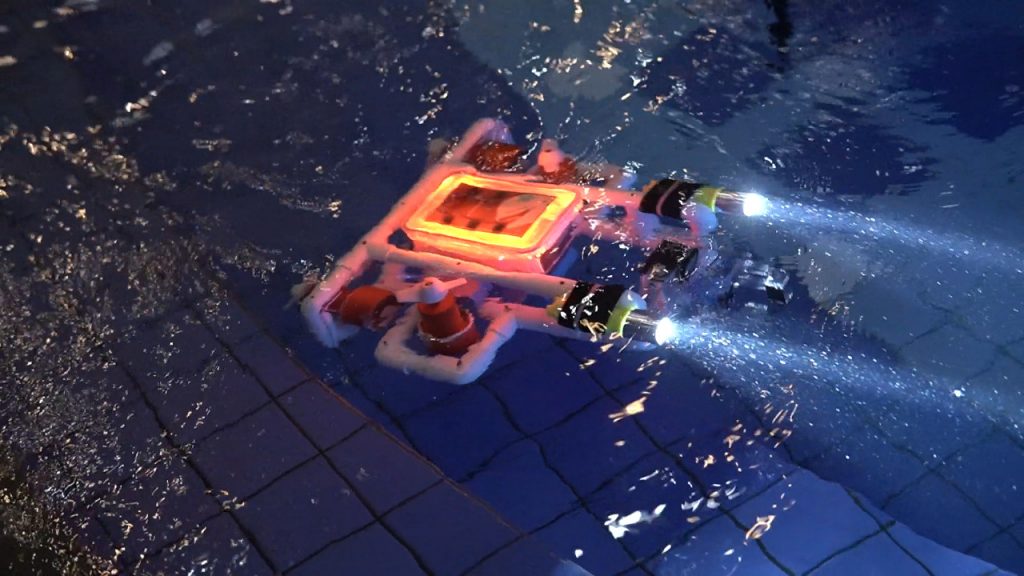
ITS Banyubramanta Team Wikraluga Robot Prototype Testing to detect sea mines
Related News
-
ITS Collaboration with BPBD East Java, Launching VR Disaster Simulation
ITS Campus, ITS News — Supporting anticipation of disasters and continuing to educate the public, Institut Teknologi Sepuluh Nopember
November 23, 2020 17:11 -
Supporting the Implementation of Innovative Ideas, ITS and IYSA Hold International Competition
ITS Campus, ITS News — Institut Teknologi Sepuluh Nopember (ITS) has once again proven its commitment to supporting the
November 23, 2020 17:11 -
ITS Maintains Informative Qualification for Five Consecutive Years at KIP Awards
ITS Campus, ITS News — Institut Teknologi Sepuluh Nopember (ITS) has once again successfully maintained its Informative Qualification predicate
November 23, 2020 17:11 -
ITS Strengthens Smart Eco-Campus through UI GreenMetric 2024
ITS Campus, ITS News — Institut Teknologi Sepuluh Nopember (ITS) has once again demonstrated its commitment to environmental concern
November 23, 2020 17:11
